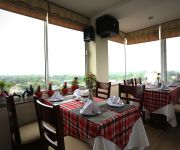Facts and Data
Webpages:
Official Unesco Page
View photos from OUR PLACE the World Heritage collection
Basis Data:
Unesco World heritage since: 2010
Size of heritage: 18 ha
- Buffer zone: 108 ha
Coordinates:
Longitude: 105,837°
Latitude: 21,039°
Summary
The Thang Long Imperial Citadel was built in the 11th century by the Ly Viet Dynasty, marking the independence of the Dai Viet. It was constructed on the remains of a Chinese fortress dating from the 7th century, on drained land reclaimed from the Red River Delta in Hanoi. It was the centre of regional political power for almost 13 centuries without interruption. The Imperial Citadel buildings and the remains in the 18 Hoang Dieu Archaeological Site reflect a unique South-East Asian culture specific to the lower Red River Valley, at the crossroads between influences coming from China in the north and the ancient Kingdom of Champa in the south.
Location on Map
Show bigger map on Openstreetmap
Central Sector of the Imperial Citadel of Thang Long - Hanoi: A Glimpse into Vietnam's Rich History
The Central Sector of the Imperial Citadel of Thang Long, located in Hanoi, Vietnam, is a UNESCO World Heritage site that offers a fascinating glimpse into the country's rich history. This ancient citadel, with its impressive architectural structures and historical significance, stands as a testament to Vietnam's cultural heritage.
History
The Imperial Citadel of Thang Long has a history dating back over a thousand years. It was first constructed in the 11th century during the Ly Dynasty and served as the political and cultural center of Vietnam for several centuries. The citadel was the seat of power for various dynasties, including the Ly, Tran, and Le dynasties.
Throughout its history, the citadel underwent numerous expansions and renovations, reflecting the changing architectural styles and influences of different ruling dynasties. It was during the Le Dynasty that the citadel reached its peak, with grand palaces, temples, and administrative buildings being added.
However, the citadel faced destruction and abandonment during the Nguyen Dynasty in the 19th century. The French colonial administration demolished many of the structures, leaving only a few remnants of the once-magnificent complex.
Current State
Today, the Central Sector of the Imperial Citadel of Thang Long stands as a significant historical site, showcasing the remaining vestiges of Vietnam's imperial past. The site covers an area of approximately 18,000 square meters and consists of archaeological remains, ancient buildings, and artifacts.
Visitors to the site can explore the archaeological excavations that have unearthed important artifacts, providing valuable insights into the daily life and governance of the past. The remnants of palaces, foundations, and ancient roads offer a glimpse into the grandeur and layout of the original citadel.
One of the most prominent structures within the citadel is the Hanoi Flag Tower, a symbol of the city. This 33-meter tall tower was built during the Nguyen Dynasty and served as a military observation post. Its strategic location offers panoramic views of the surrounding area.
Another notable feature is the Doan Mon Gate, the main entrance to the citadel. This imposing structure, adorned with intricate carvings and vibrant colors, showcases the architectural prowess of the past. It serves as a gateway to the central area, where the Forbidden City once stood.
The Central Sector of the Imperial Citadel of Thang Long is not only a historical site but also a cultural hub. It hosts various cultural events, exhibitions, and performances that celebrate Vietnam's heritage. The site's preservation and promotion efforts ensure that future generations can appreciate and learn from this significant part of Vietnam's history.
In conclusion, the Central Sector of the Imperial Citadel of Thang Long in Hanoi, Vietnam, is a UNESCO World Heritage site that offers a captivating journey through the country's past. Its historical significance, architectural marvels, and cultural importance make it a must-visit destination for those seeking to delve into Vietnam's rich heritage.
Hotels and places to stay
Flower Garden Hotel
Moon View Hotel
ZEN HOTEL
Santa Barbara Boutique
FIRST EDEN HOTEL
GALAXY
SUPERHOTEL HANOI OLD QUARTER HOTEL LE CARNOT
Garnet
HANOI BANGKOK HOTEL
Smile Hotel
Videos from the area
Videos provided by Youtube are under the copyright of their owners.















